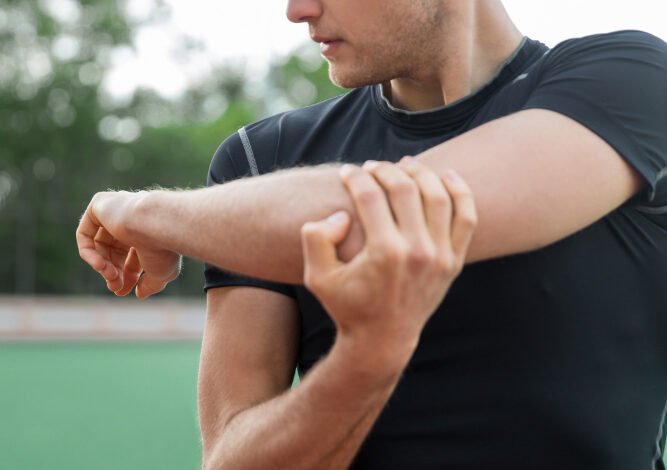
For both fitness enthusiasts and athletes, recovery plays a crucial role in their training regimen. Without proper recovery, muscle fatigue, soreness, and even injury can prevent long-term success and optimal performance. While modern sports recovery techniques such as ice baths, foam rolling, and compression gear are widely used, there’s a growing interest in holistic approaches like Ayurvedic Sports Massage Therapy for post-workout recovery. This ancient healing practice offers unique benefits that help athletes heal faster, reduce soreness, and prepare the body for future physical challenges.
In this blog, we’ll explore how Ayurvedic Sports Massage Therapy accelerates the body’s natural healing process, promoting better recovery and overall well-being after strenuous physical activity.
Understanding Ayurvedic Sports Massage Therapy
Ayurvedic Sports Massage Therapy is an ancient practice rooted in the Ayurveda healing system, which originated in India over 5,000 years ago. Unlike modern sports massages, which often focus solely on muscle manipulation, Ayurvedic massage therapy considers the athlete’s entire body, mind, and energy flow (Prana). It involves the use of specialized techniques, warm herbal oils, and deep tissue massage to promote balance, restore vitality, and enhance the body’s self-healing abilities.
Key to this practice is the focus on doshas, which are the body’s natural energies—Vata, Pitta, and Kapha. The goal of ayurvedic sports massage is to balance these doshas so that the body may heal itself more efficiently. The massage strokes are tailored to an athlete’s doshic constitution, ensuring a personalized experience that accelerates recovery and improves flexibility, circulation, and relaxation.
The Science Behind Post-Workout Recovery
After an intense workout, the body undergoes a recovery process that involves muscle repair, the removal of metabolic waste, and the restoration of energy reserves. Delayed onset muscle soreness (DOMS), which often occurs 24 to 48 hours after exercise, is the body’s natural response to microscopic muscle damage caused by strenuous activity.
The goal of post-workout recovery is to minimize muscle soreness, reduce inflammation, and support the body’s ability to rebuild muscle tissue. Ayurvedic Sports Massage Therapy addresses each of these needs by combining the healing power of touch with herbal oils that have anti-inflammatory, muscle-relaxing, and nourishing properties.
How Ayurvedic Sports Massage Therapy Speeds Up Healing
-
Improves Blood Circulation and Oxygen Delivery
The potential of Ayurvedic Sports Massage Therapy to increase blood flow is one of its main advantages. During intense physical activity, muscles are deprived of oxygen, which leads to the buildup of lactic acid and other metabolic by-products. These drugs aggravate and prolong muscle discomfort. Ayurvedic massage techniques, such as long, rhythmic strokes and pressure point stimulation, improve circulation by encouraging blood flow to affected areas. This improved circulation speeds up the healing process, helps remove toxins from the body, and gives worn-out muscles more oxygen.
-
Reduces Inflammation and Muscle Soreness
Muscle inflammation is a natural response to exercise but can be uncomfortable and slow down recovery. Ayurvedic Sports Massage Therapy uses warm, medicated oils like Mahanarayan and Dhanwantharam, which are infused with herbs known for their anti-inflammatory properties. These oils work their way deeply into the joints and muscles, easing discomfort and reducing swelling.
By regularly incorporating Ayurvedic massage into post-workout routines, athletes can significantly reduce delayed onset muscle soreness (DOMS) and muscle stiffness, allowing for a quicker return to training.
-
Relieves Stress and Promotes Relaxation
Physical exertion can take a toll not just on the muscles but also on the nervous system. Ayurvedic Sports Massage Therapy is particularly effective at soothing the nervous system, promoting relaxation, and reducing stress levels. This relaxation response is essential for proper recovery, as high levels of cortisol (the stress hormone) can impair muscle repair and slow down the healing process.
Deep relaxation is encouraged by Ayurvedic massage by activating the parasympathetic nervous system. In addition to improving the quality of sleep and lowering cortisol production, this also encourages the synthesis of growth hormones, which are essential for muscle repair.
-
Balances Energy and Restores Vitality
The body’s life force energy, or prana, is a key idea in Ayurveda medicine and is essential to healing and recovery. After strenuous physical activity, the flow of Prana can become imbalanced, leading to fatigue and sluggish recovery. Ayurvedic Sports Massage Therapy focuses on unblocking energy channels (Srotas) and restoring the free flow of Prana throughout the body. This results in improved vitality, mental clarity, and overall well-being, helping athletes feel rejuvenated and ready for their next workout.
The use of specific oils tailored to an athlete’s dosha also plays a crucial role in restoring energy balance. For instance, athletes with an imbalance in Vata dosha (governed by air and space) may experience more joint stiffness and muscle fatigue. Ayurvedic massage for Vata imbalances involves grounding, warming oils that soothe the nervous system and encourage fluid movement in the joints.
-
Prevents Injuries and Supports Long-Term Performance
Regular Ayurvedic Sports Massage Therapy doesn’t just accelerate healing—it also helps prevent future injuries. Ayurvedic massage lowers the incidence of strains, sprains, and other common sports-related injuries by increasing muscle elasticity, flexibility, and joint mobility. Furthermore, it fortifies tendons, ligaments, and muscles, increasing the body’s resistance to external strain.
This proactive approach to recovery supports long-term athletic performance, ensuring that athletes can train consistently without frequent setbacks due to overuse or injury.
Integrating Ayurvedic Sports Massage into Your Routine
To maximize the benefits of Ayurvedic Sports Massage Therapy for post-workout recovery, it’s essential to integrate it into your routine regularly. Consider scheduling massages once or twice a week, especially after intense training sessions or competitions. Your dosha type, unique demands, and recovery objectives can all be taken into account when customizing the massage techniques and oils during an Ayurvedic consultation.
Conclusion
Post-workout recovery is key to athletic success, and Ayurvedic Sports Massage Therapy offers a holistic approach to speeding up healing, reducing muscle soreness, and preventing injuries. By improving circulation, reducing inflammation, and balancing the body’s energy, Ayurvedic massage not only helps athletes recover faster but also supports long-term physical and mental well-being. Whether you’re a professional athlete or a fitness enthusiast, incorporating Ayurvedic Sports Massage Therapy into your recovery plan can make all the difference in achieving your performance goals.



